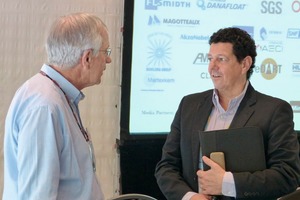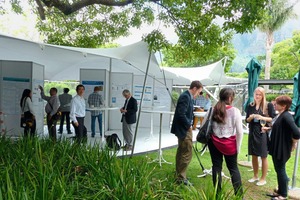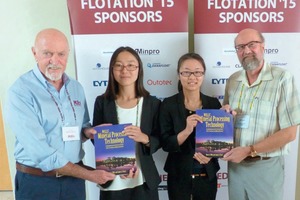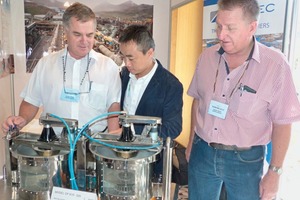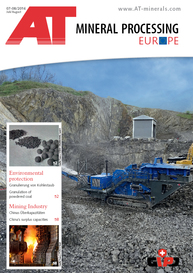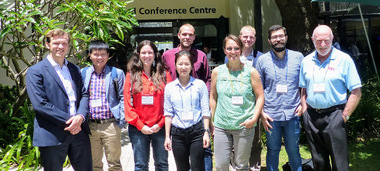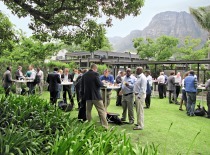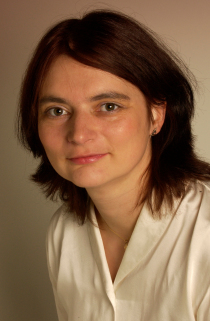Flotation ’15 in Cape Town/South Africa
Despite a depressed state of the minerals industry more than 240 delegates from 27 countries and all continents participated at the Flotation 15, 16th–20th November 2015, in Cape Town/South Africa. The Conference, which takes place every second year, was organized by MEI - Minerals Engineering International. A record 163 abstracts were submitted to the conference, of which 116 were selected for presentation, roughly equal numbers via oral and poster presentation.
The conference is divided into two parts – a two day part of fundamentals and a two day part of applications including the poster show. At the same time 27 companies exhibited their products.
Modelling, aerodynamics and hydrodynamics, flotation with sea water and coarse particles flotation were the main issues in the fundamentals part. After an opening keynote lecture from Prof. J.J. Cilliers (Imperial College/UK), who dealt with current status and results on flotation process modeling, papers on measurement and manipulation of surface properties, on tracking of particle paths in a flotation cell via PEPT (Positron Emissiom Particle Tracking), measurement and modeling of bubble size and bubble size distribution and on energy input followed.
Prof. G.J. Jameson (University of Newcastle/Australia), who in 2015 received Australia‘s most prestigious science award, the Prime Minister‘s Prize for Innovation, for the development of his eponymous flotation cell, presented a very topical paper on coarse particle flotation, which is attracting a great deal of interest because of its possible application in comminution circuits, scalping off coarse particles and hence reducing the load on the circuit and the corresponding energy consumption.
The second day started with a keynote lecture from Prof. Janusz Laskowski, (University of British Columbia/Canada) about limitations on measuring the surface properties of anisotropic minerals. It was followed by presentations on collectors, frothers and regulators for different mineral systems dominated by copper minerals. Furthermore the electrochemical properties of suspensions and the impact on flotation results were discussed.Water and energy are critical variables to the mining industry, particularly for operations situated on desert areas. Papers from Chile and Japan discussed the use of seawater in flotation, particularly in relation to the problems caused in Cu-Mo separation.
The first day of the applications part was opened by Dr. D. R. Nagaraj (Cytec Ind./USA) with a survey on trends in flotation chemistry. The following lectures covered a wide band on measurement methods, reagents and case studies. The second part of applications symposium was opened by P. Amelunxen (Aminpro/Chile) with the critical question why there is no flotation standard test. Various case studies were presented regarding the biggest flotation cells (up to 660 m³) as well as lectures on pneumatic and column flotation, fluidized bed flotation and the so called reflux flotation cell for flotation of fine particles and flash flotation for separation of high density precious minerals from millingcircuits, digital systems for measurement and control and sampling.
This event was characterized by a remarkable range of topics from theoretical fundamentals to the practice-oriented topics.
The eights conference of this series – the Flotation ’17 – will take place at the Vineyard Hotel in Cape Town/South Africa from 13th-16th November 2017. Further information can get under: www.min-en.com/flotation17

